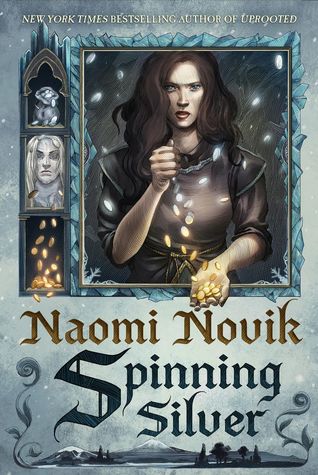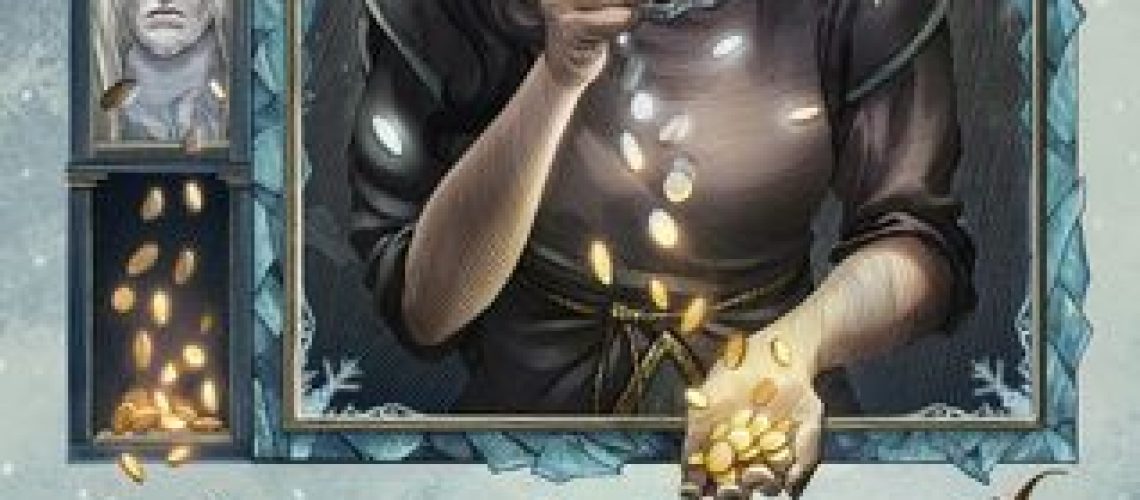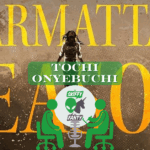Spinning Silver first appeared as a novella in The Starlit Wood edited by Dominik Parisien and Navah Wolfe. It has been expanded into a novel that will delight lovers of fairytale retellings.
The story is based on Rumplestiltskin. Miryem comes from a family of moneylenders, some more successful than others. Her father’s generous nature makes him one of the less successful. When Miryem’s mother grows sick from their impoverished conditions, Miryem takes over the family business. She finds she’s good at it. So much so that when her grandfather gives her a pouch of silver to help grow her business, she’s able to return the pouch to him full of gold. Unfortunately for Miryem, the snowy fae Staryk who haunts the woods hears her boasts. Craving gold above all else, the Staryk threatens Miryem: change his silver into gold or risk being turned to ice.
This was the gist of the original novella and the first hundred pages of the novel covers essentially the same territory. Told in first person, it starts in Miryem’s perspective. However, as the story progresses more perspectives are added in. The earliest of these is Wanda, the daughter of a poor farmer who owes money to Miryem’s family. Wanda’s mother died in childbirth and her father is an abusive alcoholic. When her family is unable to pay what is owed, Wanda becomes Miryem’s servant to work off the debt. The third key perspective is Irina, the daughter of an ambitious duke. When her father gifts her with jewellery made from the Staryk silver Miryem brings to town, Irina finds it brings her in touch with the distant Staryk blood inherited from her mother’s side of the family… and draws the eye of the visiting Tzar.

These women are not friends: the differences in their class preclude this. Irina is nobility, Miryem from comfortably middle-class merchants (even though her immediate family spent some time in poverty), and Wanda is a servant from the lower class. Even when their stories intersect, there is no emotional intimacy between them. This is perhaps not surprising in Irina’s case. However, Miryem and Wanda spend significantly more time together. Indeed, their dynamic put me in mind a little of Agnieszka and Kasia from Novik’s previous fairytale retelling Uprooted. Like Kasia, Wanda is the physically robust of the pair and is loyal to the more powerful Miryem. However, where Kasia’s loyalty is born of friendship, Wanda’s is born of practicality. Wanda recognises that a rising tide lifts all boats and that Miryem represents a chance to get away from her abusive father. As someone who loves to see great female friendships on the page, I found the lack in this book to be a little disappointing.
Abuse is a common thread between the three main characters. It’s clearest in Wanda’s story, which shows on the page some of the physical abuse she suffers at the hands of her father. In Miryem’s case, the king of the Staryk continually threatens and coerces her into changing his silver to gold. And when Irina’s story begins, she’s emotionally neglected by her father and step-mother, then rediscovers the Tzar is a violent man. It is perhaps not surprising, then, that romance is also not a key focus of the book. There are some romantic elements at play, but they are problematic in a similar way to those in Uprooted: they begin out of situations of abuse. Characters become more sympathetic as we learn more of their background, but it is up to readers to decide whether this mitigates the abuse these characters have perpetrated.
Instead, the key theme of the book is family. All three women have an uneasy relationship with their family, finding some kind of gulf between them. Both Wanda and Irina have lost their mothers. Irina’s father largely views her as a political pawn—and a disappointing one for her lack of beauty. Miryem’s parents grieve over her success as a moneylender, feeling it has made her a colder person, despite the necessity that drove her. And Wanda remains distant from the two younger brothers she shields from her father, finding them to be just another burden. However, as the story progresses, bridges are formed. The youngest of Wanda’s brothers becomes a POV character. This is a clever move for several reasons: it signals Wanda’s changing relationship with her brothers; it paves the way for a narrator who is one step removed from the action to give a somewhat more impartial account of key sequences; and it shows how Wanda’s family and Miryem’s become entwined.
As this review indicates, Spinning Silver uses a number of different threads to weave its tale. This has the potential to be rather confusing, particularly since all the perspectives are in first person. However, it is handled deftly and the result is a compelling story. At no point did I have the urge to hurry through a particular character’s section to get to another’s.
Despite featuring no recognisable place names, the story has a historical feeling to it, drawing from Slavic traditions. The Tzar is an obvious giveaway, but the feeling is reinforced by the Jewish identity of Miryem and her family. The risk of persecution for their identity is a sword that hangs over the family’s head in a way that seems very true to history.
It’s also a way of reclaiming the original fairytale from some of its anti-Semitism. The ability to transmute into gold originally lay with an ugly imp who took the maiden’s jewellery and then her firstborn child in exchange. In Spinning Silver, the ability is given to the heroine and is used to benefit those around her.
Given the heavy nature of the themes in this book, it may seem odd to review it as a YA. Indeed, fairytale novels often get shunted into the category whether or not they’re written for that market—The Beast’s Heart by Leife Shallcross is another example of this. However, with the possible exception of one violent scene that’s part of Wanda’s story, the content is suitable for readers in their mid-to-late teens.
All in all, Spinning Silver is an enchanting story that brings some new twists to a classic fairytale.







